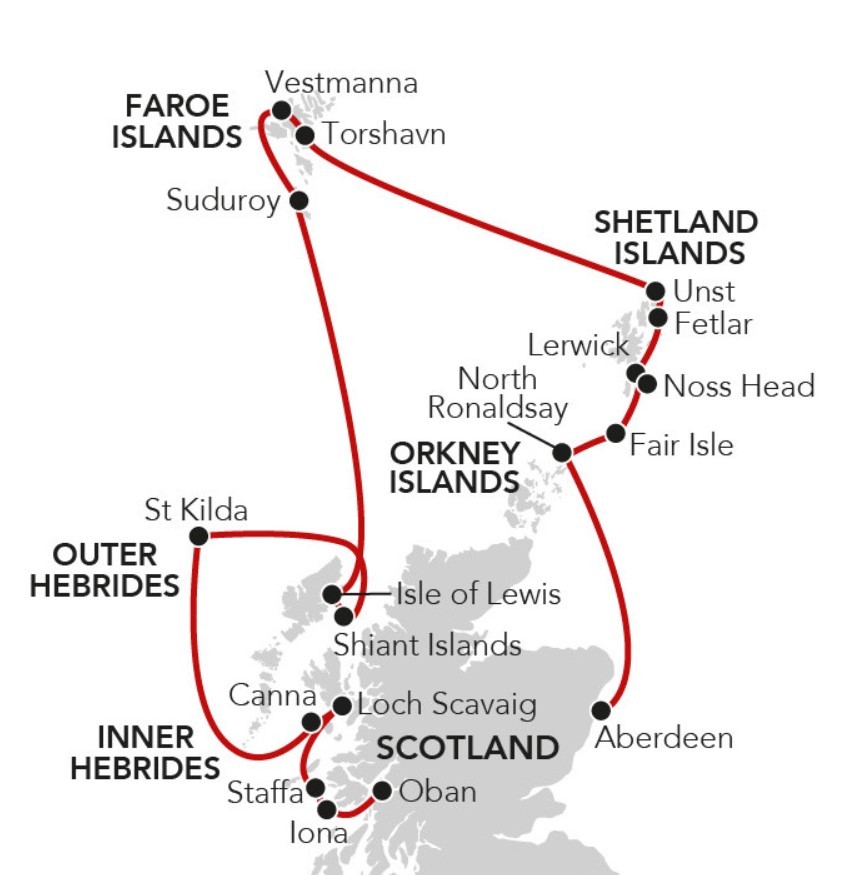
This expedition cruise is one of our most popular and will appeal to those who prefer their islands deserted, but with abundant bird and wildlife. True, Noble Caledonia can bring you all over the world, visiting all manner of exotic and wonderful places yet it is also true that some of the finest scenery, fascinating history and most endearing people are found close to home and nowhere is this truer than the islands off Scotland’s indented coastline which form stepping stones into the Atlantic. During this unique voyage, we will journey along rugged coastlines and visit once inhabited islands venturing far north to the Orkney, Shetland and Faroe Islands combined with our time in the Hebrides.
We have been operating cruises around the tip of Scotland for many years and this really is an itinerary that conveys the multiple benefits of small ship cruising. With our fleet of Zodiacs we are able to make calls into some of the remote and uninhabited islands that surround the Scottish coast and cruise close to shorelines and cliffs crowded with birdlife. Few ships make the journey to these outer islands and we are grateful to therefore be able to explore these wonderful places aboard the all-suite MS Island Sky with just 100 or so fellow passengers. To combine the small communities of North Ronaldsay, Fetlar and Unst with uninhabited St Kilda into one itinerary is rare and when combined with the towns of Lerwick and Torshavn, such an itinerary allows us to understand the history, witness the wildlife and experience the culture of these remote and beautiful islands.
- Orkney Islands
- Shetland Islands
- Faroe Islands
- Outer Hebrides & Inner Hebrides
Prices quoted here are often dependent on currency fluctuations. Please check with (01432 507450 or info@small-cruise-ships.com) for the very latest price, which may well be cheaper than the one advertised here.


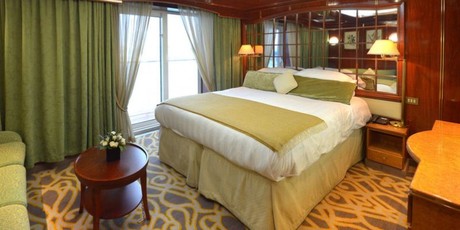
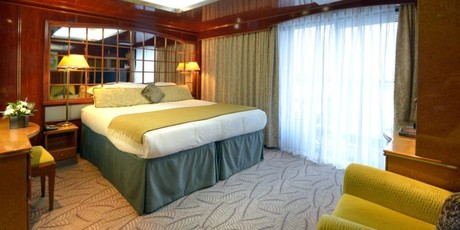
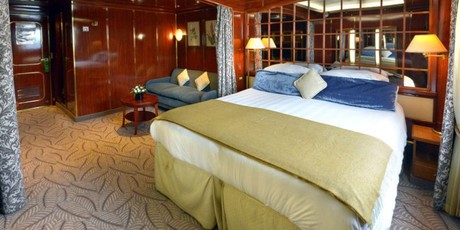




Prices quoted here are often dependent on currency fluctuations. Please check with (01432 507450 or info@small-cruise-ships.com) for the very latest price, which may well be cheaper than the one advertised here.









Embark this afternoon. Transfers will be provided from Aberdeen Railway Station and Aberdeen International Airport at a fixed time. Sail this evening.
Cruise this morning to the Orkney Islands arriving in the early afternoon at the northernmost isle of North Ronaldsay. The birdlife here is prolific as the wetland habitats support the wildfowl and wader species whilst the rugged coastline provides nesting sites for seabird colonies. If weather conditions permit, a series of walks will include the bird observatory and we also hope to view the seals hauled up on the beaches. Those wishing to explore further can visit the lighthouse with views over the nearby islands or the wool mill where yarn is produced from the island’s seaweed eating sheep.
This morning we anchor off the remote island of Fair Isle. Located midway between the Shetland and Orkney Islands, the tiny population of sixty or so islanders always extend us a warm welcome. Enjoy a walk across the island searching out the puffin slopes, visit the community hall for a cup of tea or maybe purchase some of the famous knitwear. Return to the ship for lunch and this afternoon we hope to sail around Noss Head. Here the cliffs will be full of nesting gannets, guillemots and fulmars whilst we may also see skuas in the skies above. This evening we moor overnight in Lerwick.
From the Shetland capital, we will visit the remarkable archaeological site of Jarlshof. The site was uncovered by a violent storm in the winter of 1896/7, revealing an extraordinary settlement site embracing at least 5000 years of human history. The site contains an extraordinary sequence of stone structures – late Neolithic houses, a Bronze- Age village, an Iron-Age broch and wheelhouses, several Norse longhouse, a Medieval farmstead and the 16th century laird’s house. Return to the ship for lunch and enjoy a free afternoon to explore this historic port. Tonight we will be entertained by local musicians.
Spend the morning in Fetlar. Inhabited for over 5000 years the island lays claim to being the first Norse landing site in the Shetlands. Known as the most fertile of the Shetland Islands the wildflowers bring colour to the landscape whilst the birdlife on the island is prolific. Our expedition team will lead walks ashore including the Fetlar Interpretative Centre and Museum where we will learn about the wildlife and archaeological history of the island. During lunch sail to Unst, Britain’s most northerly inhabited island. At the Heritage Centre we will learn about the islander’s struggles over the centuries and the industries that have prospered whilst the Unst Boat Haven is dedicated to the history of the island’s distinctive wooden boats which descend from Viking craft. We also visit Saxa Vord with views over Hermaness National Nature Reserve and Muckle Flugga stacks, home to thousands of gannets and puffins as well as rare Arctic alpine plants.
After a morning at sea we arrive in the Faroe Islands. This afternoon join a guided tour through Torshavn over the hills to Kirkjubour, the island’s oldest cultural centre, where we see the ruins of the 13th century St Magnus Cathedral and the 11th century church, still in use. We also visit the 900-year old “Roykstovan”, the old bishopric, considered to be the oldest wooden house in Europe. For those feeling active, we will arrange a hike in the hills surrounding the town to discover the local flora and fauna. We remain moored overnight for anyone wishing to take an after dinner stroll.
Over breakfast we will sail the short distance to Vestmanna, our base as we explore the northwest corner of Streymoy and the nearby cliffs. Here we will board local boats to explore these vertical cliffs that climb almost 1500 feet, sailing into grottos carved by the surf over the years and watching the thousands of seabirds including puffins, guillemots, fulmars and kittiwakes that nest here each summer. After lunch on board, we will drive to the beautiful village of Saksun, an isolated settlement situated beneath steep majestic mountains. We visit Duvugaroar, an old farmhouse, which is now a museum and a traditional Faroese wooden church in Kollafjord.
Our last call in the Faroes will be at Suduroy, the southernmost island of the group. From the port of Tvoroyri we have a choice of activities. Choose to join an island tour passing the beautiful scenery as we drive between the villages seeing the stunning geology, fjords, tunnels and architecture of the island and end at the southernmost point and the Akraberg lighthouse. In Porkeri we will take the ridge-top road which winds up the mountainside for wonderful views towards the steep cliffs on the west coast, the Beinisvoro promontory to the north and the luscious grass slopes to the east. To locals, this delivers the essence of the Faroe Islands with mountains and fjords, villages and valleys, birds, sheep and nature. Alternatively those feeling active may wish to join a hike to Hvaanhagi, a beautiful, uninhabited place north of Tvoroyri on the east coast of Suduroy. The view is fantastic towards the three islands Litla Dimun, Stora Dimun and Skuvoy. There are sheep and birds, a valley with a lake and beautiful high mountains. Spend the afternoon at sea as we return to Scotland.
On leaving the island capital of Stornoway, we will head across the island of Lewis to the beautiful west coast. Described as Scotland’s Stonehenge, the Callanish Standing Stones date from around 3000 BC. There are a total of 32 stones in a circular and avenue design. The stones stand like a petrified forest on the flat top of a peninsula which reaches out into East Loch Roag. We also visit the Dun Carloway Pictish Broch, probably built sometime in the last century BC, it would have served as an occasionally defensible residence for an extended family complete with accommodation for animals at ground floor level. Our next stop is the Gearrannan Blackhouse Village, a reconstructed settlement of traditional black houses which were made using dry stone masonry and have thatched roofs, distinctively weighted down with rocks. Visit the small museum, enjoy a display of a typical crofting activity such as weaving and take in the views of this dramatic site on the wild Atlantic coast. This afternoon we will board the Zodiacs for a cruise around the spectacular basalt cliffs of the Shiant Islands, a group of little islands located a few miles off the shores of Lewis. This is an excellent place to spot puffins, razorbills, guillemots, seals and hopefully white-tailed eagles.
This morning we arrive at St Kilda, a remarkable uninhabited archipelago some fifty miles beyond the Outer Hebrides. Dominated by the highest cliffs and sea stacks in Britain, Hirta, St Kilda’s main island was occupied on and off for at least two thousand years, with the last 36 Gaelic speaking inhabitants evacuated at their own request in 1930. Immediately after the evacuation, the island was bought by the Marquess of Bute to protect the island’s thousands of seabirds including puffin and fulmars, and in 1957 it was bequeathed to The National Trust for Scotland. St Kilda is one of only a few UNESCO World Heritage Sites with dual status reflecting its natural and cultural significance. The local ranger will join us on board before our expedition staff lead a number of guided walks on the island. Later, cruise past two of the largest gannetries in the world at Stac Lee and Berneray. These impressive stacs rise 170 metres from the sea and are home to up to 60,000 breeding pairs of northern gannet.
Strategically placed between the mountains of Rum and the Outer Hebrides, the island of Canna and its adjoining neighbour Sanday are bound together like some rare text that reveals over 60 million years of Hebridean geology and history. They have an amazingly rich archaeological landscape with remains dating to all periods of settled occupation in Scotland. Canna is run as a single farm and bird sanctuary by the National Trust for Scotland and enjoys the best harbour in the Small Isles, a hornshaped haven. The fertile soil and its diversity of habitats mean that the island has an incredibly rich plant life with 248 native flowering plants recorded. We will see Canna House and wander across grassy basalt plateaus to the 600 foot cliffs on the north shore. Arrive in the early afternoon at the lovely Loch Scavaig. Just beyond is the freshwater Loch Corruisk with its breathtakingly beautiful view over the Cuillins. This is great walking country, but for those who prefer a less energetic afternoon our Zodiacs will explore the coast looking out for seals.
At first light we arrive at Staffa where the perpendicular rock face features an imposing series of black basalt columns, known as the Colonnade, which has been cut by the sea into cathedralesque caverns, most notably Fingal’s Cave. Weather permitting, we will use our Zodiacs to explore closer. Sail over lunch to Iona which has been occupied for thousands of years and has been a place of pilgrimage and Christian worship for several centuries. It was to this flat, Hebridean island that St Columba fled from Ireland in 563 and established a monastery. Here his followers were responsible for the conversion of much of pagan Scotland and Northern England. No less than 62 Scottish Kings are buried in the Abbey. Visit the Abbey or perhaps walk along the white sandy beaches or go in search of the corncrake amongst the irises.
Disembark this morning. Transfers will be provided to Glasgow International Airport and Glasgow Central Railway station at a fixed time.
Itineraries are subject to change.
Island Sky
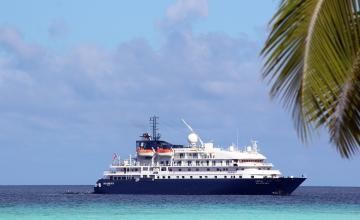
| Length: | 90 Metres |
|---|---|
| Built/Refurbished: | 1992/2018 |
With a maximum passenger capacity of only 116, a vessel of her size is capable of carrying many more but instead the MS Island Sky has the benefit of unusually large suites, luxuriously appointed public areas and spacious outside decks.
There is a high ratio of crew to passengers- the friendly crew of 75 crew and Scandinavian captains are experienced mariners, having been in service aboard large 2000 plus passenger vessels and who now prefer a less frantic life aboard a small ship. If, like them and us, you prefer a more peaceful life at sea, you will find the MS Island Sky the perfect ship. When choosing the vessel for your next voyage of discovery, you can select a ship with endless entertainment and impersonal service or come with us where peace, high quality service and attention to detail are the order of the day. We promise there will be no organised entertainment, fancy dress, deck games or any of the usual big ship experiences. The atmosphere on board is more akin to a private yacht or country hotel. A little music in the lounge or bar after dinner, guest speakers, informative port briefings from our cruise director and of course good food which may be enjoyed leisurely in the attractive dining room. After a day ashore you will return to the comfort and peace of a well run and exceedingly comfortable ship.
Your SuiteOnboard there are 57 exceptionally spacious and well designed suites. All feature a sitting room area and some have private balconies. The feeling of luxury is enhanced by the wood panelling and brass, which predominates throughout the vessel conveying the atmosphere of a private yacht. The passenger accommodation is arranged over five decks and all suites have outside views. Each affords considerable comfort with en-suite bathroom featuring marble-topped vanity unit with sink and walk-in shower, large wardrobes, dressing table with large mirror and stool and excellent storage. There is a mini-fridge, flat screen television with inbuilt DVD player which can also play CDs and a telephone in each suite. Bottled water, towelling dressing gowns and slippers are also provided for your comfort. Other facilities include a programmable electronic safe, hairdryer, assorted toiletries and individually controlled air-conditioning and heating. The suites on each deck have their own colour theme. Soft hues and blended tones enhance the traditional maritime style making the passenger accommodation an inviting and relaxing place to be.
Your SpaceThe spacious and finely decorated public rooms include a large lounge where daily briefings and talks will be provided throughout the voyage and an elegant bar where a pianist plays periodically throughout the day. The bar also features a 24-hour tea and coffee station. The onboard library is the perfect place to relax with a book and is stocked with reference books pertaining to the places the vessel is visiting along with a selection of games and two computers with internet access. Daily newspapers and magazines are also placed in the library depending on local availability. There is also WI-FI access throughout the vessel. Outside there is a rear sun deck where meals are served in warm weather under shade, a bar and comfortable deck furniture for sun bathing or relaxing with a book. On the top deck there is a Jacuzzi and further observation and sun deck. There is also a small hairdressers on board with appointments made on request.
Your DiningAnother benefit of a small ship is the quality of the cuisine. With only one sitting and a maximum of just over 100 passengers, the galley is able to provide delicious meals. Where possible and when it meets his high standards, the chef will obtain local produce in markets or buy the catch of the day from a passing fishing boat. Such purchases enhance the well stocked larders and bring a local touch to the varied menus.
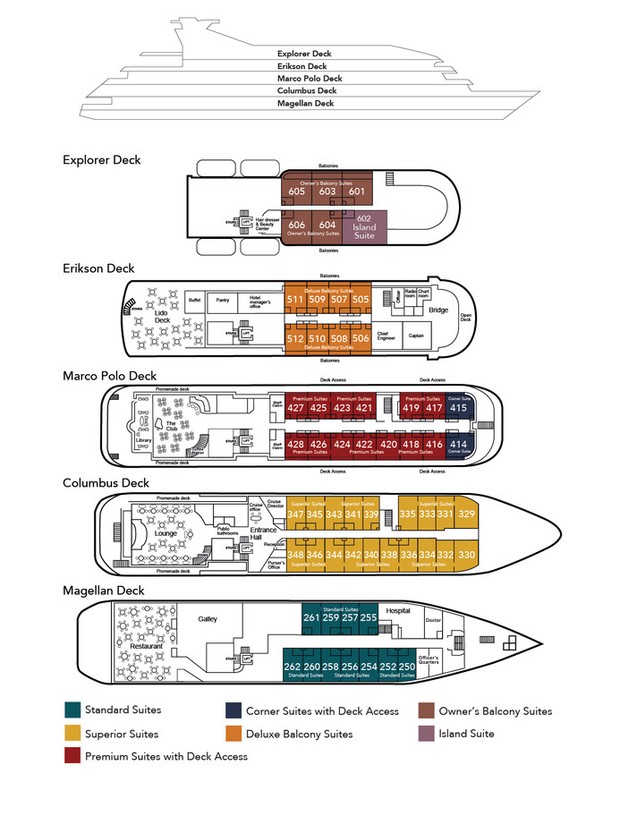
Includes
• 12 nights aboard the MS Island Sky on a full board basis
• House wine, beer and soft drinks with lunch and dinner
• Expedition team
• Shore excursions
• Gratuities
• Transfers
• Port taxes.

